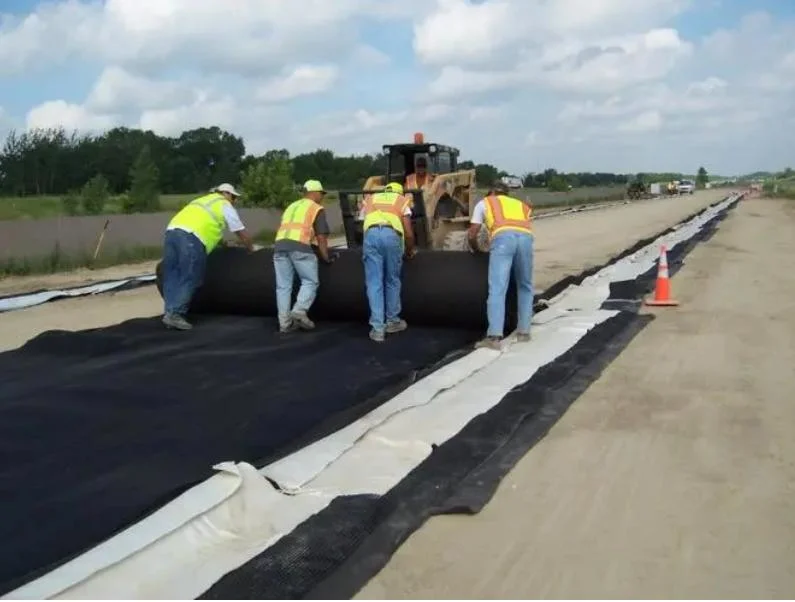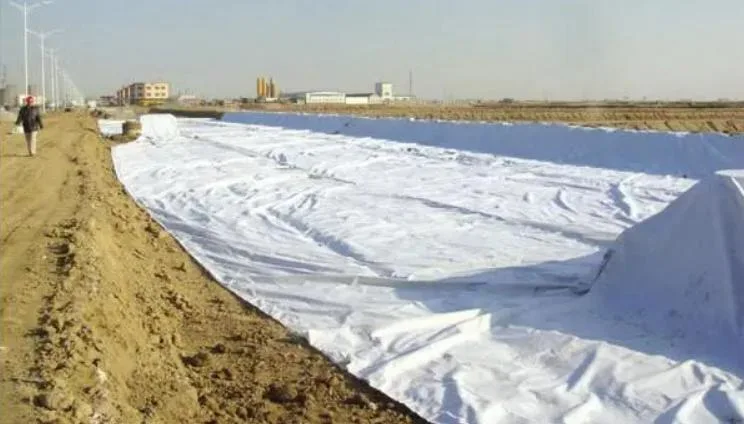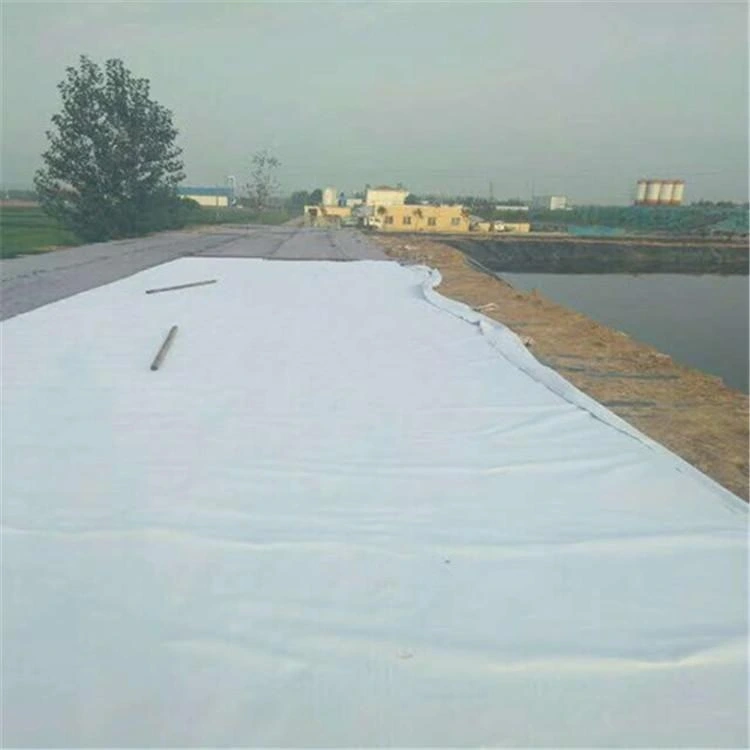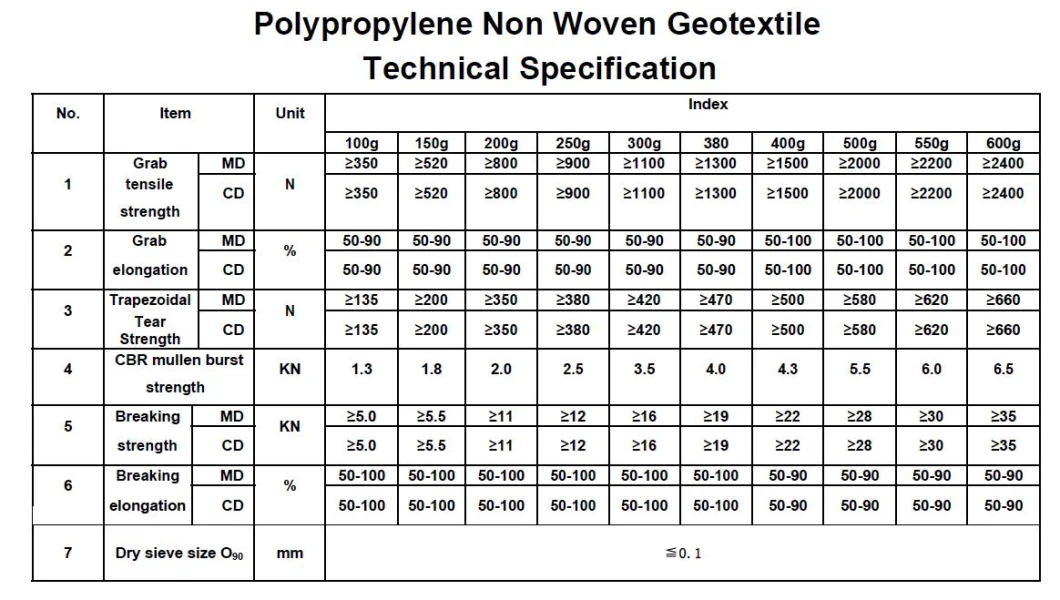

300g 350g 400g Strength Polypropylene Short Fiber Needled Geotextile for Road Use
Basic Info
| Model NO. | 001 |
| Width | 1m-8m (as Customrized) |
| Length | 50m, 100m or Customized |
| Packing | Woven Plastic Bag |
| Standard | ASTM GM13 |
| Delivery Time | Within 15day |
| Transport Package | Woven Bag |
| Specification | high-density polyethylene |
| Trademark | Looking-forward |
| Origin | Shandong, China |
| HS Code | 5602100000 |
| Production Capacity | 20000sqm/Day |
Product Description
High strength polypropylene staple fiber needled geotextile1.Product description:
High strength polypropylene staple fiber needled geotextile is produced using high strength polypropylene staple fiber as the main raw material through processes such as loosening, carding, cluttering, netting, needling, and spraying water repellent agents.
2.Main Features
1. The physical and mechanical properties such as breaking strength and puncture resistance have significant advantages, which are 2-3 times higher than those of conventional products.2. It has good acid and alkali resistance, good hot melt adhesion, good on-site processability, and strong ability to adapt to various engineering conditions.3. The components that can be used in CRTS II slab ballastless track system can reduce the interaction between the track system and the bridge deck.
3.Application scenario:
High strength polypropylene staple fiber needle punched geotextile is mainly used for the sliding layer between high-speed railway track and beam surface and the geotextile material for the isolation layer between track and friction, and can also be widely used in hydropower, highway, railway, port, airport, sports venues, tunnels, coastal mudflat, reclamation, environmental protection and other fields, playing the role of isolation, filtering, drainage, reinforcement, protection, sealing, etc.



4.Construction specification:
1, Old pavement treatment
1. The old road surface shall be cleaned of dust, loose particles, and debris, and the surface shall be kept dry. Level the sharp and abrupt parts on the road surface; The severely damaged and broken parts of the pavement should be removed and repaired with asphalt concrete. For roads with severe cracks or ruts, a 1 to 2cm leveling layer needs to be paved.
2. Spraying asphalt tack coat oil
When liquid petroleum asphalt is used for the tack coat oil, the atmospheric temperature is above 5 ºC; When emulsified asphalt is used for tack coat oil, the atmospheric temperature is above 10 ºC. During rainy days and when the road surface is wet after rain, it is not allowed to sprinkle adhesive layer oil. Pay attention to selecting the type and dosage of adhesive layer oil. Practice has proven that it is best to use asphalt modified with EVA or SBS, which have good crack resistance and thermal stability. If emulsified asphalt is used, its asphalt content must be greater than 60% to be well utilized.
Before laying the geotextile, sprinkle a layer of asphalt adhesive layer oil with a dosage of about 0.4 ~ 0.6kg/m2, then lay the geotextile, and then sprinkle a layer of adhesive layer oil of the same type on the geotextile with a dosage of about 0.5 ~ 0.6kg/m2. The following points should be noted: (1) It is recommended to use hot asphalt tack coat sleeves, and maintain the oil temperature between 150 and 170 ºC; (2) The lateral range of spraying adhesive layer oil should be 5~10cm wider than the geotextile; (3) The adhesive layer oil should be sprayed evenly and measured accurately.
If one-time oil pouring is adopted, the total amount of adhesive layer oil cannot be reduced, and the recommended value is 1.0~1.3kg/m2, and the oil temperature cannot be lower than 180 ºC. Once pouring oil, it is easy to cause impermeability and delamination of the geotextile, resulting in peeling of the surface layer.
2, Laying and overlapping of geotextile
1. The geotextile should preferably be mechanically erected or manually laid. During paving, attention should be paid to keeping the roughened surface facing upward, and then use a retainer to fix one end. Use machinery or manpower to tighten it. The tensioning elongation is about 1.0% to 1.5%, and the pavement should be laid straight and tightly against the road surface.
The fixator includes a fixing nail and a fixing iron sheet. Fixing nails should preferably be cement nails or shooting nails, with a length of 8-10 cm; The fixed iron sheet can be fixed with an iron sheet strip with a thickness of 1mm and a width of 3mm.
2. The geotextile shall be horizontally overlapped by about 4-5 cm, and the rear end shall be pressed under the front end according to the paving direction, and shall be cemented with hot asphalt or emulsified asphalt, and fixed with a retainer; The longitudinal overlap is also about 4-5 cm, which can be directly dried with adhesive oil. If the overlap is too wide, the interlayer at the overlap becomes thicker, and the binding force between the surface layer and the base layer is weakened, which can easily lead to adverse effects such as swelling, detachment, and displacement of the surface layer. Therefore, the excessively wide overlapping parts should be cut off.
3. The geotextile should be laid in a straight line as much as possible. When turning is necessary, cut the fabric at the bend, lay it overlapping, and spray a layer of adhesive oil for bonding. Creases of the fabric should be avoided as much as possible. If wrinkles occur during laying (when the height of the creases is>2cm), they should be cut off, then overlapped in the laying direction, and connected with adhesive layer oil.
4. After laying the geotextile, spraying the second coat of asphalt tack coat oil and cooling it for about 2 hours, an appropriate amount of fine yellow sand should be promptly sprinkled to prevent vehicles from lifting or damaging the geotextile due to wheel oil sticking, with the amount of fine sand being about 1-2 kg/m2.
3, Asphalt surface construction
1. The construction method of asphalt pavement is consistent with that of ordinary asphalt pavement. The pavement structure and thickness design should adopt the methods specified in relevant specifications. The thickness of the asphalt overlay is generally 4-6 cm for old asphalt concrete pavement.
When paving asphalt mixture, the paving temperature must be strictly controlled!
If the temperature is too high, the concrete is easy to burn out; The temperature is too low, affecting the compactness.
2. Pavement compaction treatment The degree of compaction of the pavement is very important for the quality of the pavement. Insufficient compaction of the pavement can lead to cracking, looseness, rutting, and other phenomena, seriously affecting the service life of the pavement.
4, Construction precautions
1. Vehicles should be avoided from turning or braking sharply on the geotextile as much as possible, especially when paving asphalt pavement. Any sharp turning or skidding may lift or damage the geotextile.
2. Construction in rainy, humid, or cold weather conditions can affect the adhesive strength and overlay effect of the coating.
3. Traffic must be closed during the laying process. Except for construction vehicles, other vehicles are only allowed to pass through the geotextile in emergency situations.
4. If the paver slips when paving the hot mix asphalt mixture, a small amount of stone chips can be scattered on the surface of the adhesive layer oil.
In general, when we skillfully master the key construction points of geotextile, it can bring greater economic benefits into play and make greater contributions to our urban construction.
5.Product specification:

The geomembrane roll are in the hand sewing woven bag packing, safe and scratch-proof.The bag color can be customized, with your own logo.








